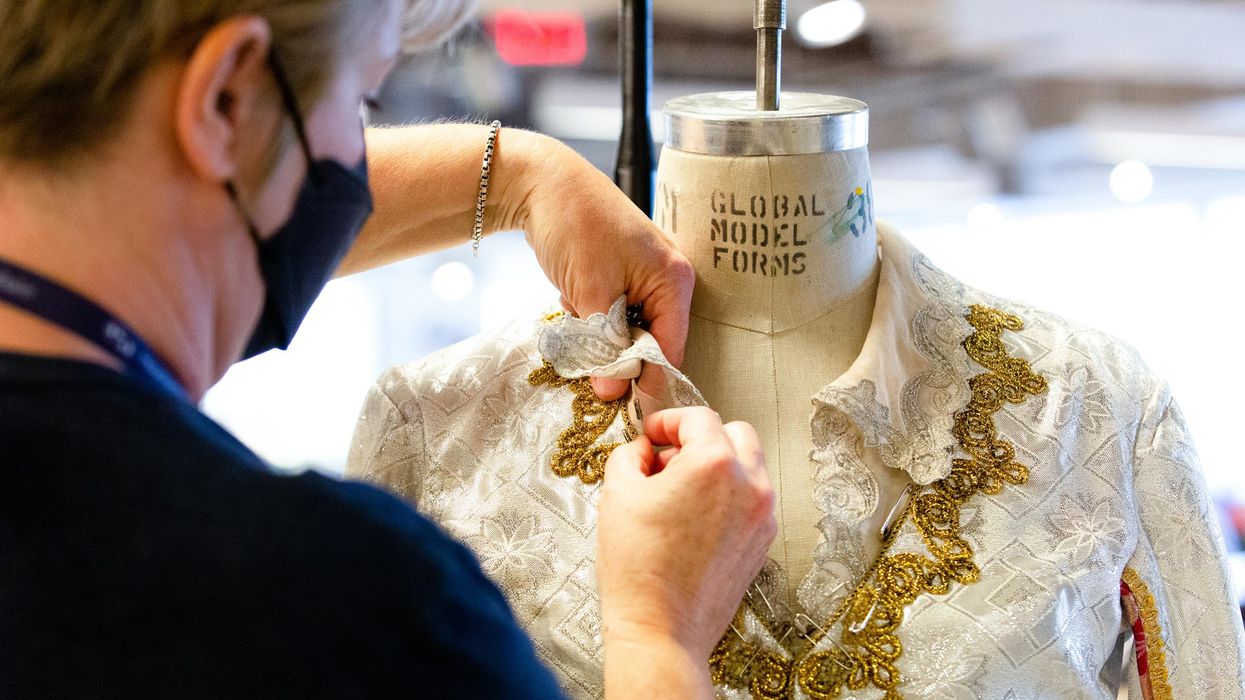Make 'Em Last: 6 Tips for Costume Care
Everything from makeup and sweat to quick changes and props can end up shortening the lifespan of your favorite costumes. Dance Magazine asked costume shop directors for the tricks of the trade they use to keep their garments looking (and smelling) as fresh as the day they were made.
Get Organized
Linda Lee, the wardrobe surpervisor of Tina: The Tina Turner Musical, is quick to acknowledge that she’s far from a one-woman show. “Each show is kind of like a family, and that’s how you get the work done,” she says.
In particular, Lee says she hires wardrobe crew members with an appreciation for organization. With the help of lists, charts, matching hangers and labeled containers, Lee is able to take on large shows with many moving parts. “The sewing area has to be organized so that anyone can go in and find whatever it is that they need,” she says. By assembling a department that operates as a team, the risk of missing items, ill-fitting costumes and general mid-show panic is reduced.
Air Out Those Shoes
Sandra Fox, head of costumes for Houston Ballet, knows that what goes on a dancer’s feet can make all the difference. While the dancers care for their personal ballet slippers and pointe shoes, Fox says the costume shop purchased boot dryers from a sporting goods store to run air through shared shoes and boots in between shows to prevent them from rotting or becoming disformed due to lingering sweat. (To conserve space, the shop is now planning to build its own system with PVC pipe and a blower fan.)
“The dancers mold a lot of what we give them to wear onto their feet and legs, and we want to help maintain that shape, so that it feels good to them and doesn’t become something unwearable later,” she says.
Don’t Overlook Headwear
No detail should escape scrutiny. Lee says the care of hats and headpieces in particular is often overlooked. “When you have hats in a show, they need special attention,” she says. “They can’t just be stashed in a corner.”
Lee recommends storing hats on hat blocks to help maintain their shape. To care for felt hats, she uses a soft brush to remove dust and a half-water/half-peroxide mixture for cleaning. For straw hats, she uses water alone or water with a mild soap. To remove makeup stains from hats and hatbands, Lee uses warm water with a skin-sensitive soap or baby wipes. Less frequently, Lee sends hats to a milliner for steaming to help them keep their original shape.
Don’t Always Rely on Dry Cleaners
Washing is preferable to dry-cleaning whenever a fabric will allow. “Sometimes people over-dry-clean and they’re too afraid to wash something,” Fox says. She explains that dry-cleaning items repeatedly is not only expensive, but it can lead to a buildup of dirt over time, since it doesn’t remove as much as washing. Some fabrics, like wool pants and coats, will require dry-cleaning after a run of shows. Linen and silk are fine to hand-wash unless they bleed dye, but they need to be air-dried, and then ironed or steamed to give the fabric back its feel. For garments that are too embellished for washing, use sport-wash and a handheld carpet cleaner.
Get It Out
Fox shares her tips for some common conundrums:
- Remove sweat stains and salt marks with Clorox wipes.
- Remove blood with hydrogen peroxide (or the saliva of the person who bled).
- Remove odor and bacteria by spraying a water/vodka solution, rather than air-freshening sprays.
Keep an Ever-Expanding Toolbox
Fox says she has learned to trust her gut, care for each costume piece based on its individual characteristics, and stay open to new and creative ideas. “You just have to be open to everything,” she adds.
Fox also believes in the value of sharing knowledge among colleagues and dance companies. “There is a lot of stuff out there that you can try, and if someone knows that a product works and can pass it on to you, that’s great,” she says.




